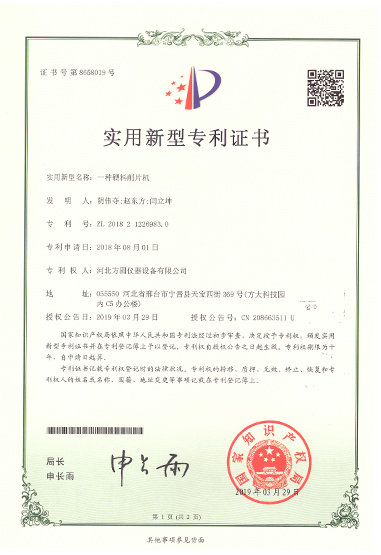Evaluation of Smoke Density Using Controlled Chamber Testing Methods
Smoke Density Chamber Test An Overview
In the realm of fire safety and material testing, the smoke density chamber test plays a crucial role in assessing the flammability and smoke emission characteristics of materials. This test is essential for various industries, including construction, textiles, and transportation, as it helps ensure products meet safety regulations and standards.
Definition and Purpose
The smoke density chamber test is designed to evaluate the amount and density of smoke produced by materials when subjected to fire. Smoke is a significant hazard in fire situations, as it can obscure vision, hinder escape routes, and pose serious health risks through inhalation. Therefore, understanding how materials behave when exposed to heat and flame is critical in both building safety and product design.
Testing Methodology
The test typically involves placing a sample of the material in a controlled environment where it is subjected to an external heat source. The smoke generated from the material as it burns is collected and measured in a designated chamber. The primary parameters measured during the test include smoke density, smoke obscuration, and the rate at which smoke is generated.
One commonly used standard for the smoke density test is ASTM E662, which specifies the requirements for a smoke chamber. During this test, the material sample is ignited, and the resulting smoke is monitored over a specific period. The amount of light obscured by the smoke is measured, giving a quantitative assessment of smoke density, often referred to as the specific optical density (Ds).
Importance of Smoke Density Testing
The results obtained from smoke density tests are invaluable for several reasons
smoke density chamber test

1. Safety Compliance Many building codes and regulations require that materials used in construction meet certain smoke density criteria. This ensures that in the event of a fire, the materials do not contribute excessively to smoke production, thereby aiding evacuation and reducing the risk of smoke inhalation.
2. Material Development Manufacturers use smoke density data to enhance and innovate their products. By understanding how their materials perform in fire conditions, they can tweak formulations to reduce smoke emissions, creating safer products for consumers.
3. Risk Assessment For industries such as aerospace and automotive, where passengers' safety is paramount, understanding the smoke generation characteristics of materials used can inform design decisions, improving the overall safety of vehicles and aircraft.
4. Consumer Awareness As consumers become more aware of the materials in their environments, smoke density testing provides transparent data that can guide purchasing decisions. Consumers can select products that are certified as having low smoke emissions, contributing to healthier indoor air quality.
Challenges and Future Directions
While the smoke density chamber test is a valuable tool, challenges remain. Variability in test methodologies and interpretations can lead to inconsistent results across different standards. As fire safety technology evolves, there is a need for standardization in testing procedures to ensure that results are comparable and meaningful.
In addition, advances in material sciences and engineering may lead to the development of new, less flammable materials with lower smoke production. As research continues, it will be essential to adapt testing protocols to account for these innovations, ensuring that safety standards keep pace with technological advancements.
Conclusion
The smoke density chamber test is a fundamental aspect of fire safety testing, providing critical data that informs material selection and safety compliance. As industries strive towards creating safer environments, the importance of understanding smoke production cannot be overstated. With ongoing research and advancements in testing standards, the future of fire safety materials looks promising, paving the way for innovations that prioritize both performance and safety. By focusing on minimizing smoke density, we can collectively enhance safety in various applications, ultimately protecting lives and property.
-
The Role of Tensile Force Testers in Quality Control and Material Science
NewsAug.01,2025
-
Maintenance and Safety Tips for Aging Ovens
NewsAug.01,2025
-
Density Balance in Forensic Science
NewsAug.01,2025
-
Advanced Optical Measurement Technologies
NewsAug.01,2025
-
A Buyer’s Guide to Tensile Test Machines
NewsAug.01,2025
-
Why the Conductor Resistance Constant Temperature Measurement Machine Redefines Precision
NewsJun.20,2025
 Copyright © 2025 Hebei Fangyuan Instrument & Equipment Co.,Ltd. All Rights Reserved. Sitemap | Privacy Policy
Copyright © 2025 Hebei Fangyuan Instrument & Equipment Co.,Ltd. All Rights Reserved. Sitemap | Privacy Policy
